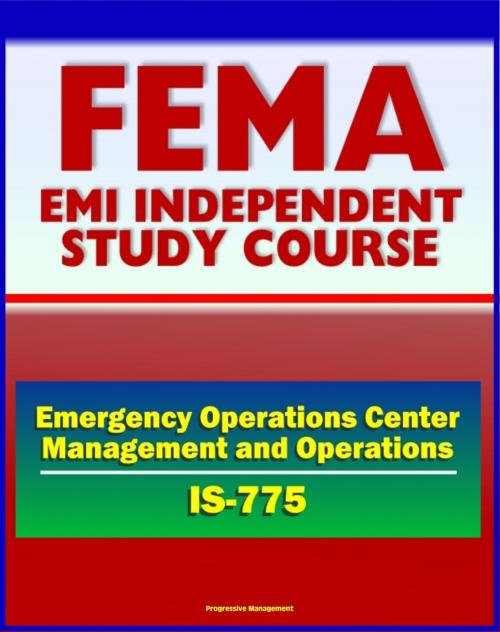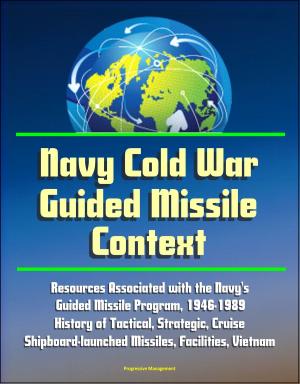21st Century FEMA Study Course: Emergency Operations Center (EOC) Management and Operations (IS-775) - NIMS, ICS, MAC Group, Joint Information System (JIS), Coordination
Nonfiction, Social & Cultural Studies, Political Science| Author: | Progressive Management | ISBN: | 9781466032095 |
| Publisher: | Progressive Management | Publication: | July 12, 2011 |
| Imprint: | Smashwords Edition | Language: | English |
| Author: | Progressive Management |
| ISBN: | 9781466032095 |
| Publisher: | Progressive Management |
| Publication: | July 12, 2011 |
| Imprint: | Smashwords Edition |
| Language: | English |
This Federal Emergency Management Agency (FEMA) independent training course manual from the Emergency Management Institute (EMI) describes (in written form in this reproduction) the role, design, and functions of Emergency Operations Centers and their relationships as components of a multi-agency coordination system. The course contains disaster-related examples, activities and case studies that relate to EOC's and multi-agency coordination systems at the local, state and federal levels of government.
At the end of the course, students should be able to:
* Relate EOC operations to National Incident Management System (NIMS) requirements.
* Describe the role that EOCs play in overall multiagency coordination.
* Describe the relationship between the EOC and the on-scene Incident Command System (ICS) structure.
* Identify staffing, information, systems, and equipment needs at the EOC.
* Determine whether participants’ EOC organizations are conducive to effective coordination.
* Identify potential alternate locations suitable for EOC operations should the primary EOC facility become damaged or inoperable.
* Create a test, training and exercise plan for critical EOC operations.
* Develop a strategy and schedule for reviewing EOC resource requirements and technology needs.
The target audience will include: Federal, state, local and tribal emergency managers; first responders to include incident commanders from all emergency management disciplines; private industry personnel responsible for coordination activities during a disaster; and Voluntary Organizations Active in Disaster (VOAD) personnel.
Topics covered include: Emergency management coordinator; emergency operations centers; NIMS; ICS; multiagency coordination; policy, resource, operating, and coordination groups; MAC group; interoperability; Joint Information System (JIS).
This is a privately authored news service and educational publication of Progressive Management.
This Federal Emergency Management Agency (FEMA) independent training course manual from the Emergency Management Institute (EMI) describes (in written form in this reproduction) the role, design, and functions of Emergency Operations Centers and their relationships as components of a multi-agency coordination system. The course contains disaster-related examples, activities and case studies that relate to EOC's and multi-agency coordination systems at the local, state and federal levels of government.
At the end of the course, students should be able to:
* Relate EOC operations to National Incident Management System (NIMS) requirements.
* Describe the role that EOCs play in overall multiagency coordination.
* Describe the relationship between the EOC and the on-scene Incident Command System (ICS) structure.
* Identify staffing, information, systems, and equipment needs at the EOC.
* Determine whether participants’ EOC organizations are conducive to effective coordination.
* Identify potential alternate locations suitable for EOC operations should the primary EOC facility become damaged or inoperable.
* Create a test, training and exercise plan for critical EOC operations.
* Develop a strategy and schedule for reviewing EOC resource requirements and technology needs.
The target audience will include: Federal, state, local and tribal emergency managers; first responders to include incident commanders from all emergency management disciplines; private industry personnel responsible for coordination activities during a disaster; and Voluntary Organizations Active in Disaster (VOAD) personnel.
Topics covered include: Emergency management coordinator; emergency operations centers; NIMS; ICS; multiagency coordination; policy, resource, operating, and coordination groups; MAC group; interoperability; Joint Information System (JIS).
This is a privately authored news service and educational publication of Progressive Management.















